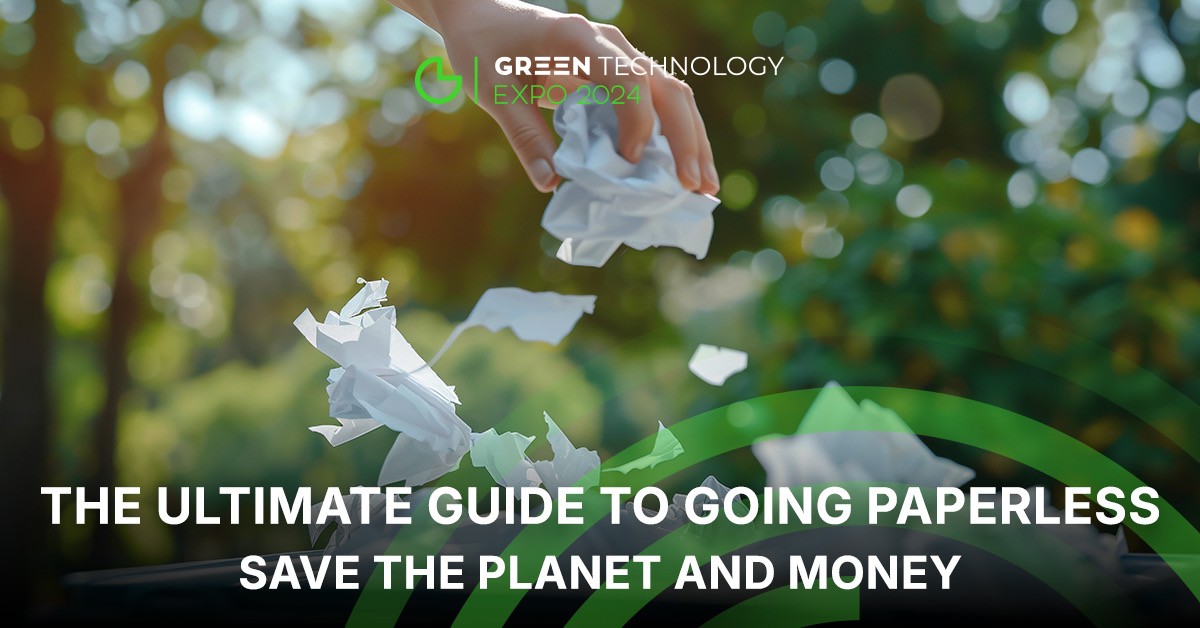The Ultimate Guide to Going Paperless: Save the Planet and Money
Oct 8, 2024
Going paperless isn’t just a trend; it’s a powerful step toward creating a sustainable future while streamlining business operations. Companies worldwide are adopting digital transformations, and this shift is helping to save money, reduce environmental waste, and boost efficiency. For businesses, where innovation and environmental consciousness are on the rise, embracing a paperless office can have a profound impact.
In this guide, we’ll explore the reasons for going paperless, the numerous benefits, and practical steps to make the transition. From reducing operational costs to preserving our planet, the advantages of a digital office setup are too significant to ignore.
Why Go Paperless?

Going paperless is about more than just reducing clutter—it’s a meaningful way to minimize waste, save time, and adopt sustainable practices. For many businesses, transitioning to digital documents offers a solution to several modern-day challenges, including high paper costs, document storage, and data security. By switching to digital processes, companies can enhance operational efficiency and build an eco-friendly image.
Moreover, paperless offices contribute to environmental sustainability. The production of paper accounts for a significant portion of deforestation and water waste. By reducing the reliance on paper, businesses can help combat these environmental issues, aligning with green technology and sustainability goals.
Lastly, digital transformation promotes seamless collaboration, whether you’re working in an office or remotely. Employees can access documents in real-time, share files securely, and reduce errors caused by misfiled paperwork. With the growing availability of digital tools, transitioning to a paperless office has become not just feasible but essential for modern businesses.
Benefits of Going Paperless
Save Costs
Transitioning to a paperless office significantly reduces overhead costs related to paper, ink, printing machines, and storage. Consider a mid-sized office that prints 10,000 pages per month. By eliminating paper, ink, and printer maintenance, the company can save thousands annually. Additionally, cloud storage systems are cheaper and more secure than physical filing systems, which require both space and labor for management.
Example: A small business in Malaysia saved 25% in operational costs by moving its documentation system to digital, avoiding the need for physical storage and paper supplies.
Environmental Benefits
Going paperless plays a critical role in reducing deforestation and greenhouse gas emissions. Every ton of paper produced consumes 24 trees and 7,000 gallons of water. By adopting a paperless system, businesses contribute to reducing waste and conserving vital natural resources, thus promoting sustainability.
Example: A financial company in Singapore reduced its paper consumption by 80%, saving approximately 500 trees a year, as part of its eco-friendly office initiative.
Improved Efficiency and Productivity
Manual handling of paper documents can slow down business processes. With digital tools, documents can be retrieved, edited, and shared instantly. This reduces time spent on administrative tasks, allowing employees to focus on value-added activities.
Example: An HR department that transitioned to digital HR documents processed payroll and employee records 50% faster than their paper-based system.
Enhanced Security and Compliance
Paper documents can easily be lost, stolen, or damaged. Digital files, on the other hand, can be encrypted, backed up, and protected by multiple layers of security. This makes compliance with data protection laws easier and improves business continuity in case of disasters.
Example: A tech startup in India faced a data breach with its paper-based system but managed to avoid future incidents by moving to secure cloud storage, thus adhering to stricter data protection regulations.
Promotes a Sustainable Business Image
Businesses that adopt a paperless system can market themselves as eco-conscious and socially responsible, attracting environmentally aware consumers and partners. This green approach can be a competitive advantage.
Example: A marketing agency in Vietnam gained new clients after promoting their paperless, eco-friendly office initiative, positioning themselves as a sustainable business.
How to Achieve It
Invest in Digital Tools
The first step in going paperless is investing in digital document management systems and other necessary tools. Solutions like cloud storage, digital signatures, and collaboration platforms streamline operations and enable employees to work efficiently without relying on paper.
Adopt Cloud-Based Storage
Storing documents in the cloud allows for easier access and sharing. It also eliminates the need for physical storage, reducing both costs and environmental impact.
Use E-signature Tools
E-signature platforms enable you to sign and send documents digitally, avoiding the need for printed contracts and forms. This not only speeds up processes but also saves paper.
Integrate Project Management Tools
By adopting project management software like Asana or Trello, businesses can collaborate on projects and track progress without printing reports or memos.
Educate Employees on Digital Best Practices
Ensure that employees are trained on using digital tools effectively. This reduces reliance on printing and encourages the habit of using electronic documents.
Automate Paper-Intensive Processes
Processes like invoicing, payroll, and HR management can be automated to reduce paper usage. Digital automation tools minimize errors and save both time and resources.
Conduct a Paper Audit
Identify areas in your office where paper is still being used unnecessarily and replace those processes with digital alternatives. This includes switching to e-receipts and digital billing.
Conclusion
Going paperless is a win-win for both businesses and the planet. Not only does it reduce costs, but it also helps save the planet by minimizing paper waste and contributing to sustainability. With the right digital tools and strategies in place, making the transition is easier than ever. Companies, especially those focused on innovation and green technology, have much to gain from this eco-friendly approach. By embracing a paperless office, businesses can achieve greater efficiency, improved security, and a sustainable future.
News
What Is Green Innovation in Business?
Dec 17, 2024
EVs and the New Era of Sustainable Transportation
Dec 3, 2024
Eco-Friendly Technology Trends to Watch for a Greener Future
Nov 19, 2024





